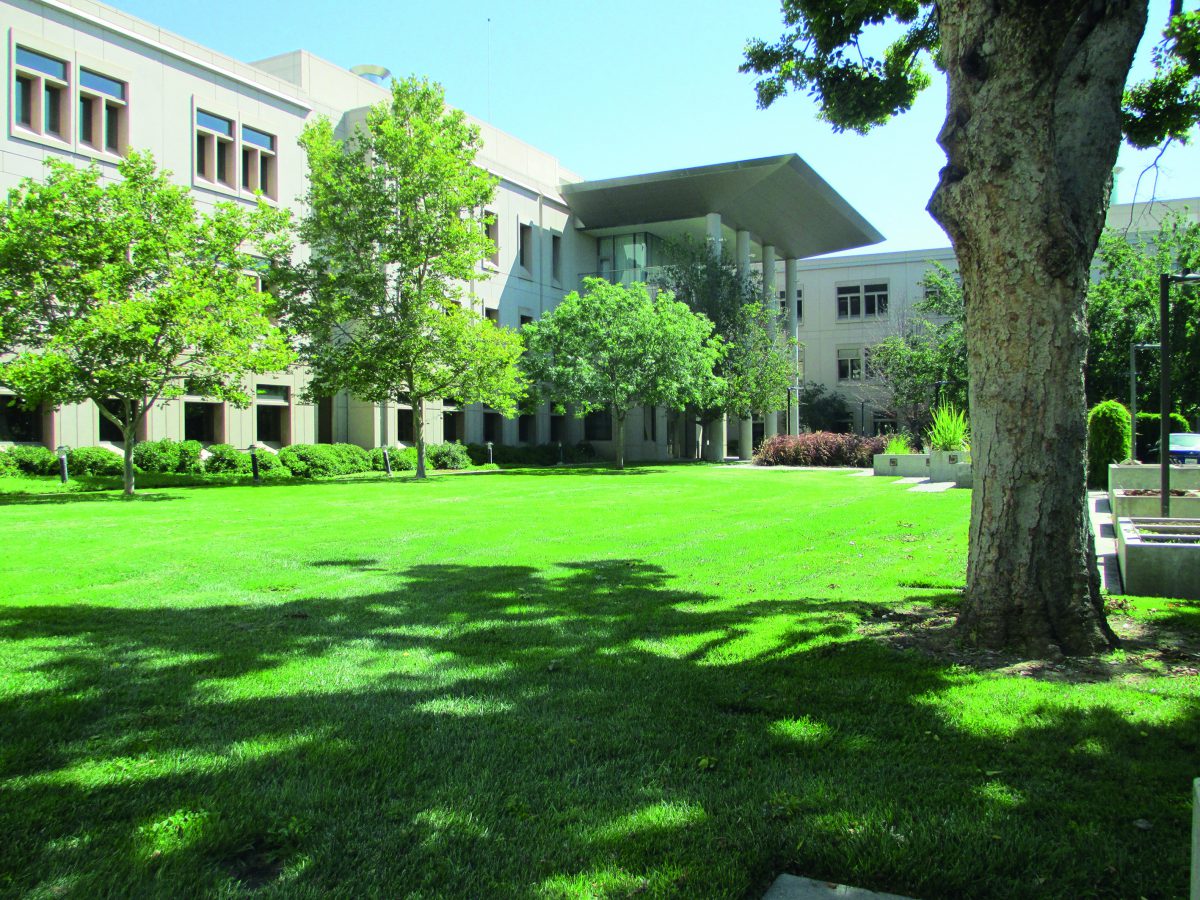UC Davis building BREEAM Excellent - BRE Group
UC Davis building gains BREEAM In-use Excellent rating
Overview
As one of the most sustainable universities in the world, University of California (UC) Davis saw great value in lowering carbon emissions using this science-based standard. It carried out a pilot assessment on one of its buildings, which earned a BREEAM In-use rating of Excellent. The university plans to benchmark its progress and continue making improvements across campus.
About
UC Davis is one of the most sustainable universities in the world. According to the University of Indonesia GreenMetric World University Ranking, it ranks No. 1 in the 2016 assessment of 516 colleges and universities in 74 countries for environmentally friendly campus operations and policies, and research and education on sustainability. UC Davis is also a Top 10 “Cool School” in Sierra magazine’s ranking of America’s greenest colleges and universities.
Background
As a global leader in sustainability, UC Davis understands the impact that buildings have in the big picture of sustainability and are eager to make a difference by lowering carbon emissions across campus.
Built in 2001, the Plant and Environmental Sciences is a three-story, 126,651 sqf building that provides state-of- the-art facilities for research. Laboratories make up 80% of the building with the rest consisting of faculty offices from the Departments of Plant Sciences and Land, Air and Water Resources. The Green Building Team chose this building to pilot the BREEAM In-Use program because the building had undergone recent upgrades to increase energy efficiency, reduce water use, and improve indoor air quality and wanted to recognize the completed work.

Solutions
UC Davis sustainability achievements include:
14,000 metric tons (9%) of campus’ carbon footprint reduced by the 62-acre Solar Farm–the largest installation in the UC system and largest “behind-the-meter” solar plant on a US college campus offsetting electricity demand.
14% of campus’ power supply comes from the solar installation.
$5 million (15-20%) of savings annually at maturity from optimizing HVAC control systems for all campus buildings.
15,500 tons of material reduced, reused, recycled, and composted in 2015-2016.
61 million gallons of potable water (9% of campus’ total potable water use for a year) saved annually by switching to recycled water in four cooling towers at UC Davis.
The campus aims to be carbon neutral by 2025.
Although UC Davis relies on the Solar Farm to lower its carbon footprint, it also realizes how important it is not to “solarize” existing inefficiencies. The facilities team has been outstanding in improving building operations. Recent upgrades include:
Low-flow fixtures.
Energy Star computers.
New LED lighting with HVAC control protocols in use to minimize energy consumption and lower carbon footprint.
In 2014, the Facilities Management Energy Conservation Office performed an HVAC retrofit on the laboratories, which resulted in 36% total energy savings. The following activities contributed to major energy savings:
Temperature setbacks
Reduced exhaust velocities established through wind tunnel studies
Reduced air flow rates when building was unoccupied
Replaced ten existing exhaust fan motors with new high efficiency motors
Upgraded to new relays and direct digital controls (DDC)
Established occupancy-based lighting and HVAC control for spaces and fume hoods
Mark Klein, Project Manager at Healthy Buildings, said of the project: “As a university at the forefront of conducting research to improve the built environment, UC Davis is a superb example of an institution that walks the sustainability talk. The Green Building Team made my job easy because they came with support from UC Davis leadership and had their strategic roadmap clearly defined. Surrounded by an atmosphere of science, the team was excited to learn how to use the BREEAM In-Use system on the Plant and Environmental Sciences building.”
Joshua Morejohn, Energy Manager at Energy Conservation Office, remarked: “After going through the process of using the BREEAM In-Use tool, it was really evident how BRE has simplified the process for benchmarking buildings. By following the suggested next steps, the results showed us in real time how operating performance of the building could be improved to lower costs and get closer to meeting our goal of being carbon neutral by 2025.”
Key features:
7% of energy in this building comes from the campus Solar Farm
Well connected to the public transport network providing building occupants with a range of sustainable transportation alternatives
Water-efficient fittings including low-flow fixtures
Benefits
Amy Burns, Green Building Coordinator of the Green Building Team at UC Davis explained: “Out of nearly 700 buildings that make up the campus of UC Davis, we identified only 10 that could meet prerequisites with known green building rating systems. With the BREEAM In-Use standard now available for the US marketplace, we wanted to identify if BREEAM was a better fit for the bulk of our building inventory. The team was very pleased with the flexibility and simplicity of using BREEAM as a truly accessible program to help us move forward with our sustainability goals.”
